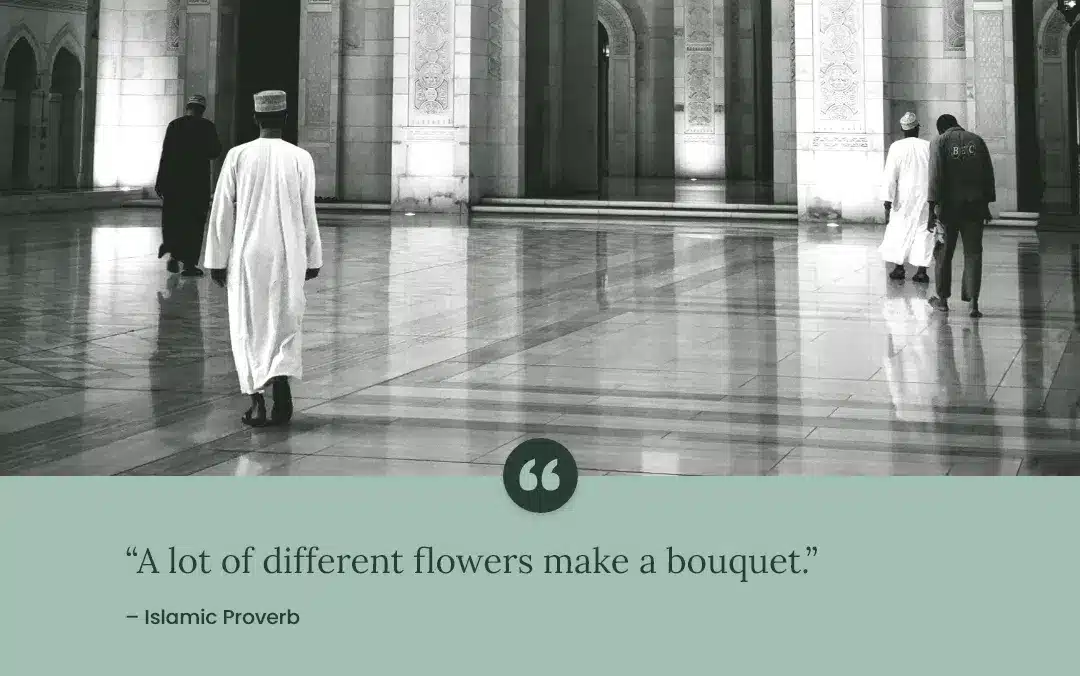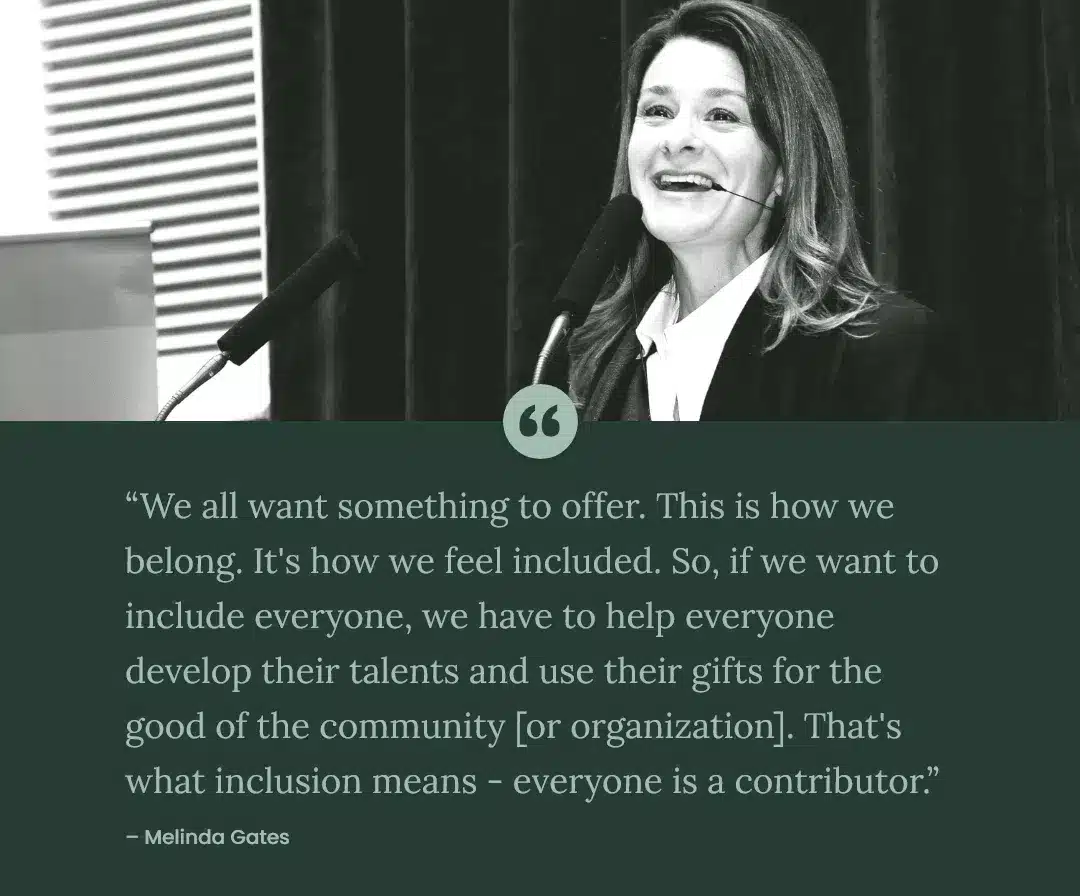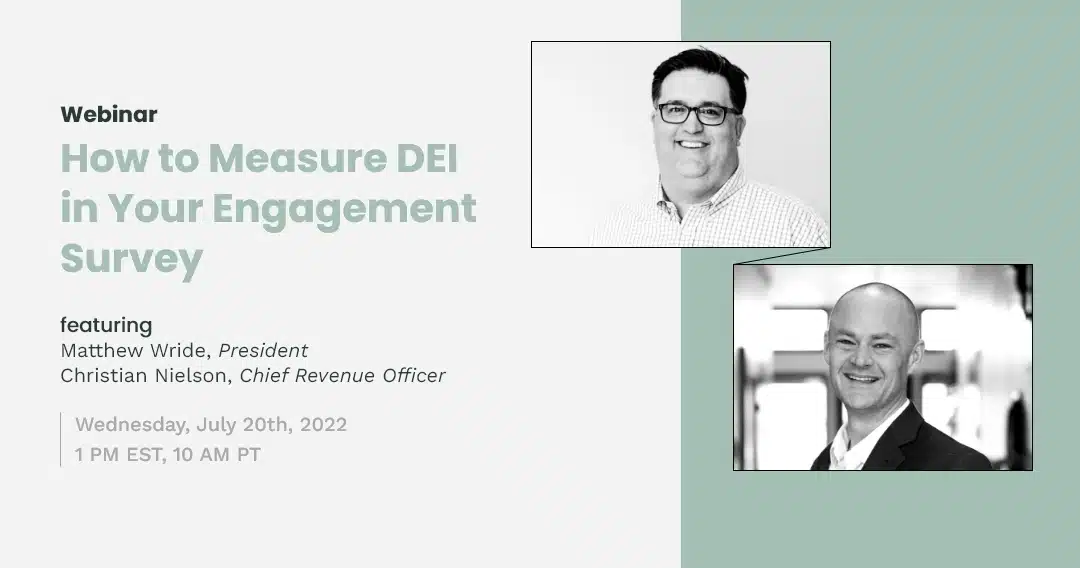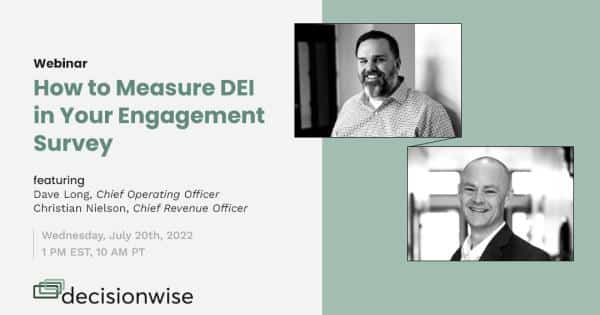Tidbits
What do diversity, equity, and inclusion really mean within an organization? How do we move beyond superficial quotas to a point where our natures have truly changed such that all voices are valued and cherished?
We absolutely see the substantive case for diversity and inclusion. Diversity of thought, backgrounds, and perspectives yields a far better product, organization, and service mindset.
Goodwin would certainly know. She has studied some of the greatest leaders in history. She shows us that there are two parts to the equation: diversity, plus the freedom to speak without retaliation. Both are vital.
100%. As we discussed in our last issue, belonging is the key to both engagement and building a successful, substantive DEI program.
Brilliant in the Basics: Satisfaction Before Engagement
Today, I am writing this newsletter in an office that is far too hot. Our office’s air conditioning flunked out over the weekend, and we are waiting for the repair service to come. Most of my colleagues are crammed into the one cool area of the office. The rest of us are sweating it out, literally.
My dire situation reminds me of a key principle formulated by the British psychologist, Frederick Herzberg. Herzberg was the first to realize that satisfaction and dissatisfaction among employees cannot be measured along the same continuum but are two independent phenomena that operate differently. Herzberg labeled dissatisfaction elements as hygiene factors and elements that increase satisfaction, as motivators. Dissatisfaction elements (e.g., my boiling office), must be dealt with independently, and business leaders should not assume that an increase in satisfaction means a corresponding decrease in dissatisfaction.
Pro tip: We must first deal with pesky hygiene factors before we can work on other elements of the employee experience. Hence, you should ensure that your employee surveys address both satisfaction and engagement elements.
Remember, no amount of work on higher-level needs will be effective if basic satisfaction/hygiene challenges remain unaddressed. Just ask me about my sweltering office. I don’t care about my personal impact right now; I want the cold air to flow!
Featured Discussion
Much is currently being written and shared about improving diversity, equity, and inclusion (DEI) within the workplace. In our HR New Roundup section below, we highlight a few recent pieces. At DecisionWise, we hope to add to the conversation by helping organizations build listening programs that will help them better evaluate their DEI efforts. For the month of July, we will focus on DEI.
Our research has led us to a four-part model when measuring DEI:
Voice
Employees feel their thoughts and opinions are heard and reasonably considered in organizational decisions.
Growth Opportunities
Employees feel they have opportunities and resources to develop and grow in the organization.
Belonging
Employees feel accepted, comfortable, and connected within the organization’s culture.
Organizational Commitment
Employees feel the organization champions and sponsors diversity, equity, and inclusion.
In today’s issue, we will focus on Voice and Growth, covering the remaining two elements in our next issue.
The key to employee Voice is that employees must: (a) have a reasonable opportunity to be heard, and (b) be able to express themselves without fear of reprisal. Here are some suggested survey items you might include in your listening campaigns:
- We listen to and value each other’s thoughts and opinions.
- This organization values employee input, feedback, and suggestions.
- I feel that I can share my ideas and opinions without fear of negative consequences.
- My supervisor regularly recognizes my efforts and contributions.
- This organization is responsive to ideas and suggestions for improvement.
In the context of employee Growth, consider how you might use these potential statements:
- My supervisor supports my efforts to develop and grow.
- I am satisfied with the opportunities for my own professional growth in this organization.
- I have received the training I need to do my job well.
- I feel challenged and stretched in my job in a way that results in personal growth.
- I have the tools and resources I need to do my job well.
However, asking these questions is not enough. You should also give care to the following issues:
Issue #1 Take time to load demographic information into your survey tool to evaluate how these items rank for those within diverse communities.
Issue #2 In this same vein, do not rely on self-reported demographics. Some respondents are subject to bias. They underreport their associations with minority populations, answering according to what they think is socially desirable or out of fear.
Issue #3 In the context of DEI, seriously consider using a third-party survey vendor to ensure confidentiality. Costs have decreased for survey administrations and using a third party demonstrates a commitment to getting the right data from your people confidentially. Again, let your employees know why this survey will be different and explain how you are committed to preserving confidentiality by using a third party.
Issue #4 Take time to specifically identify what diverse communities will be involved and consider whether the measures are appropriate to each of these communities. Would focus groups be better received?
Issue #5 Avoid pre-existing biases that may be ingrained within your culture. Consider this anecdote. Sheryl Sandberg, during her tenure at Google, was instrumental in creating designated parking spots for those who are pregnant. Google leaders asked themselves why it took so long to recognize this need. The answer: no leader with executive power had ever been pregnant before. This story begs this question: Does the group tasked with solving or measuring a problem possess sufficiently diverse perspectives to solve the underlying problem?
There is still much to be done with DEI. We are just getting started. Yet, at DecisionWise, we are so pleased to see the progress we are all making. Let’s keep the momentum rolling!
What’s Happening at DecisionWise
UPCOMING WEBINAR
Care for Diversity, Equity, and Inclusion (DEI) is critical for any modern organization. But how do you best measure the current state of DEI and surface opportunities for improvement?
HR News Roundup
Here are some other great tips and resources from the past two weeks, curated to save you some time.
- Are Your Organization’s DEI Efforts Superficial or Structural? (HBR)
- Stop Making the Business Case for Diversity (HBR)
- Are Your D&I Efforts Helping Employees Feel Like They Belong? (HBR)
- Companies Seek To Promote Diversity With More Women and People of Color in Management Roles (The Good Men Project)
- Diverse senior leadership key to engagement and retention: Canadian Marketing Association (Yahoo Finance)
- Bettering corporate culture with DEI initiatives (Benefits Pro)
- Using employee voices to elevate DEI strategies (Benefits Pro)
- The Business Case For Diversity May Be Backfiring, A New Study Shows (Forbes)
- A Threat To Workplace Equality, The Reversal Of Roe V. Wade Calls Organizations To Action (Forbes)








